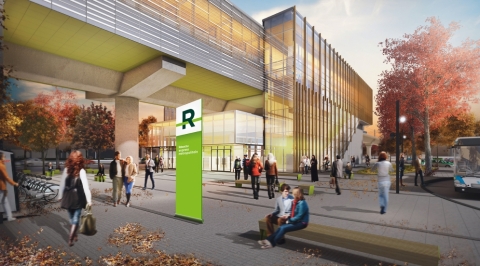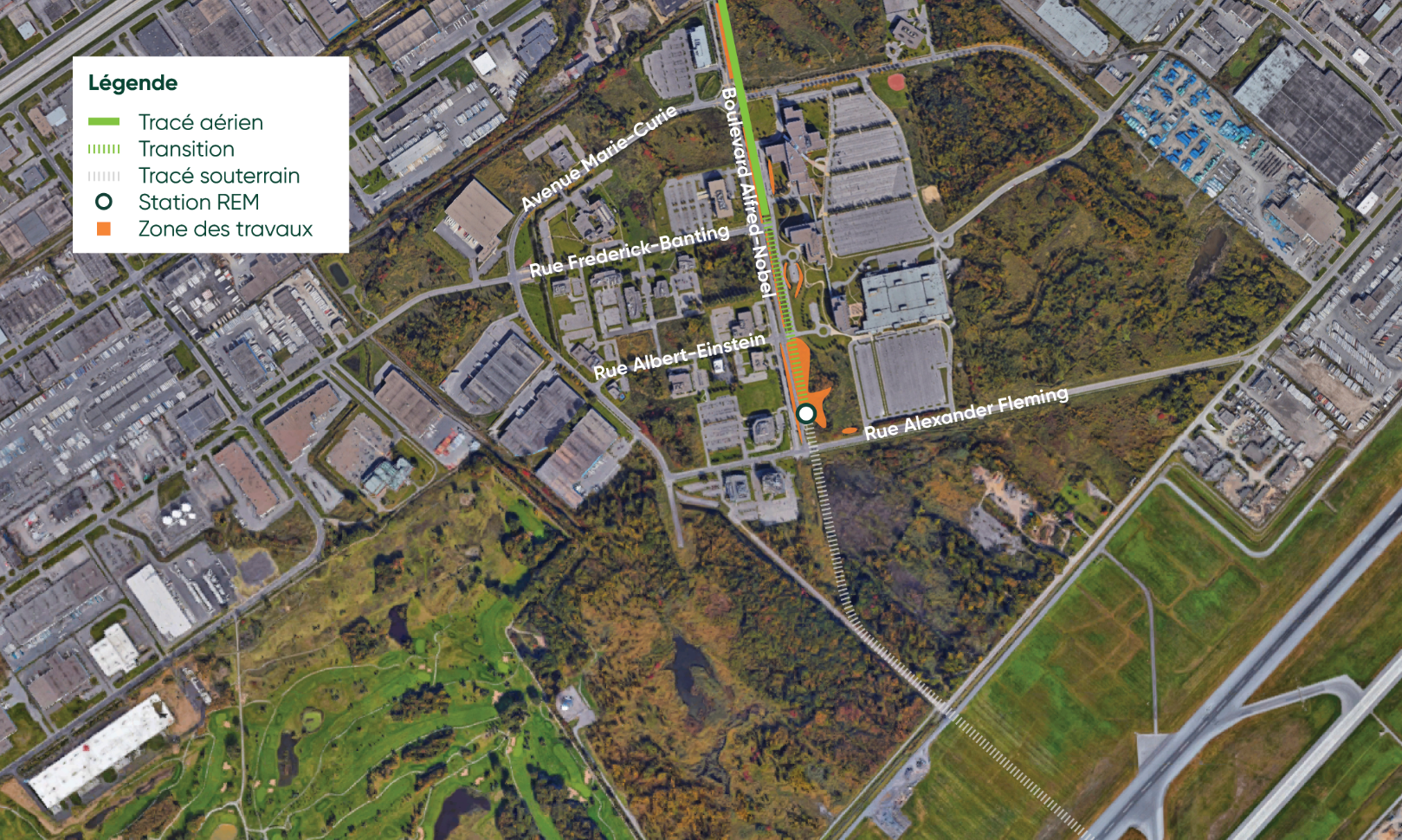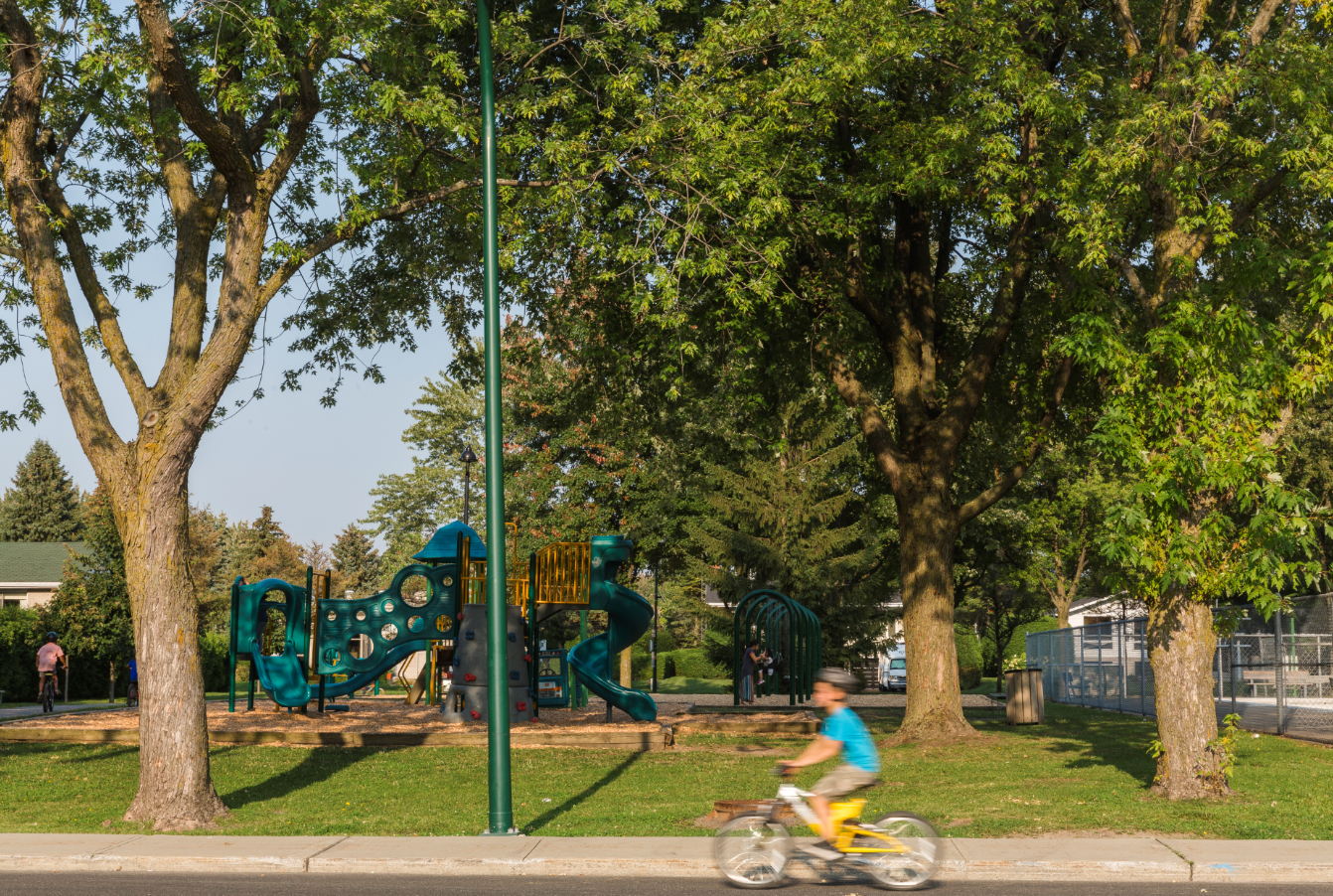
Technoparc and West Island: information about the work in progress
As you may have noticed, work is well underway on the South Shore, at the Édouard-Montpetit station and along the Deux-Montagnes line, but preparatory work has also begun along the West Branch.
What does this work entail?
Beginning in mid-September, the NouvLR consortium team will be increasingly visible in the Saint‑Laurent borough and on the West Island. The upcoming activities will enable the teams to mobilize, install equipment and clean up the sites in order to build the REM’s infrastructure and stations.
To accomplish this, workers will first carry out branch removal and tree and shrub cutting. They will then ensure that the wood are commercial recovered or they will conduct waste shredding (chipping) on site.
Please note that any cutting must adhere to minimum requirements and the limitations of the land identified in the project. These activities will be overseen and coordinated by our environmental experts. Trees and plant species have been inventoried in each work zone. At-risk plant species and trees will be relocated, if the circumstances allow for it, or compensated with new plantings.
Precautions taken in the Technoparc area
Regarding the Technoparc Montréal area, the work will focus north of Alexander Fleming Street. Two years ago, the decision was made to change the REM's route: from now on, the REM will run through a tunnel north of Alexander Fleming Street in order to avoid wetlands (south of the street).
 The work area (in orange on the map) indicates where trees will be cut. Outside the identified areas, the REM will not have an impact. The location of the future station has not been categorized as a wetland.
The work area (in orange on the map) indicates where trees will be cut. Outside the identified areas, the REM will not have an impact. The location of the future station has not been categorized as a wetland.
We have also ensured that the construction techniques do not affect these wetlands and that the tunnel is built directly into the rock:
- First of all, the launch shaft and trench are built using watertight walls. These methods are known for maintaining the neighbouring water table level and are often used to build structures in water, for example, the Eglinton and Spadina tunnels in Toronto.
- Once the retaining walls have been built, the ground is excavated from the shaft and the trench. Walls are installed below the final excavation level, and a slab is placed on the bottom of the shaft to resist heave due to the water table (see the illustration below). This technique prevents surface water from draining from adjacent wetlands or the surrounding water table.
- Following excavation, a tunnel-boring machine such as the Earth Pressure Balanced Machine (EPBM) is used to provide pressure to support the tunnel face. This makes it possible to tunnel through rock or earth while controlling water pressure, without disrupting the water table. Consequently, no water will leak or seep into the tunnel.
Did you know? Fall is the best time to minimize the impact of branch removal and tree and shrub cutting activities. By doing this work now, we will avoid the nesting season, and chicks will have left their nests.
Our commitments
In addition to our commitments to protect the Technoparc Montréal wetlands and at-risk species, the REM project office is committed to replanting cut trees, and much more!
250,000 trees will be planted during REM construction
Through a voluntary partnership with Jour de la Terre and the 375000arbres.org program, 250,000 trees will be planted to compensate for the GHG emissions produced during the construction phase.
A 10% increase to the number of trees replanted
Once construction work is completed, the same number of trees that were cut in temporary construction zones will be replanted, and an additional 10% will be planted in the municipal territory or borough where the trees were cut. The planting strategy will be carried out in close partnership with the municipalities and boroughs.
 Nearly 100,000 trees have already been planted in recent months via the Jour de la Terre program.
Nearly 100,000 trees have already been planted in recent months via the Jour de la Terre program.
![]()
A few figures
- Reduction of 680,000 tonnes of GHG emissions over 25 years of the REM in operation
- 250,000 trees planted to compensate for GHG emissions during construction
- 26 stations integrated into their environment
- 2023: commissioning of the system in the West Island